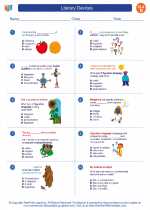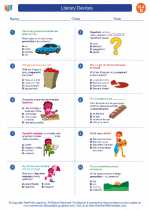Literary Devices -> foreshadowing
What is Foreshadowing?
Foreshadowing is a literary device in which the author hints at future events in the story. It adds suspense and tension, and helps to build anticipation in the reader.
Types of Foreshadowing
- Direct Foreshadowing: The author directly hints at what will happen later in the story.
- Indirect Foreshadowing: The author uses subtle hints and clues to suggest future events.
- Character Foreshadowing: The behavior or dialogue of a character hints at what will happen later.
- Symbolic Foreshadowing: Certain symbols or objects in the story suggest future events.
Examples of Foreshadowing
Here are some examples of foreshadowing in literature:
"It was a dark and stormy night, a perfect setting for what was about to unfold."
"The old, abandoned house loomed in the distance, a foreboding sign of things to come."
"She had a sense of unease, as if something terrible was going to happen."
Why Do Authors Use Foreshadowing?
Authors use foreshadowing to create suspense, build tension, and keep readers engaged. It also adds depth to the story by allowing readers to make connections between the hints and the actual events in the plot.
Identifying Foreshadowing
To identify foreshadowing in a story, look for recurring themes, symbols, or phrases that seem to hint at future events. Pay attention to the feelings or reactions of the characters, as they often provide clues about what is to come.
Effect of Foreshadowing
Foreshadowing creates anticipation and suspense, which keeps readers engaged and eager to find out what will happen next. It also adds layers of meaning to the story and enhances the overall reading experience.
[Foreshadowing] Related Worksheets and Study Guides:
.◂English Language Arts Worksheets and Study Guides Fourth Grade. Literary Devices

 Worksheet/Answer key
Worksheet/Answer key
 Worksheet/Answer key
Worksheet/Answer key
